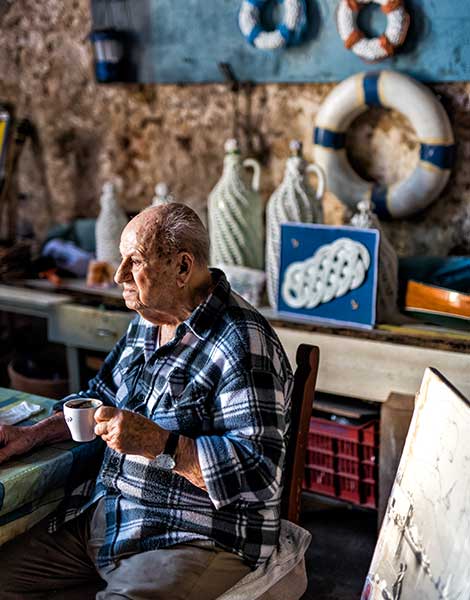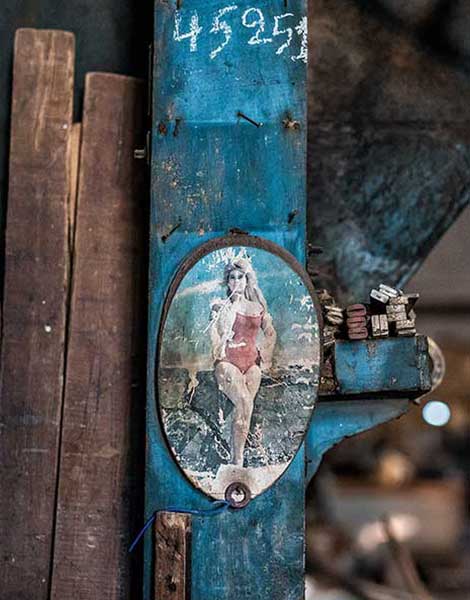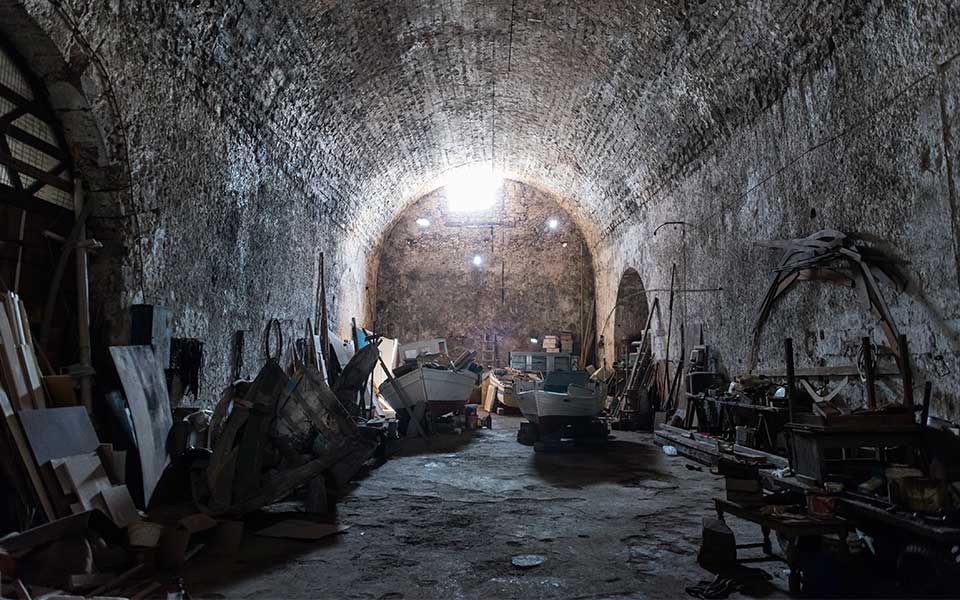From 1526 onwards, Crete’s Venetian rulers constructed a total of 22 neoria (dockyard buildings) along the old harbor of Hania in order to consolidate their naval presence in the region. These structures, up to 50m in length, were built using irregularly shaped stones, and feature vaulted ceilings with pointed arches.
During the Axis occupation of World War II, these buildings housed torpedo-making facilities. After the war, they were used for storing grain. Only nine of the neoria are still standing, and most of them are being used by the Archaeological Service as storage facilities for excavated items.
The renovated building that is architecturally distinct from the others is the “Grand Arsenal,” constructed circa 1600, which today houses the Center of Mediterranean Architecture and hosts events and exhibitions.

© Thalia Galanopoulou

© Thalia Galanopoulou
Of the three structures at the easternmost end of the harbor, one houses the Hania Sailing Club and another the small, private Maritime Museum of Crete. And then there’s the third building, the workshop of 91-year-old Haralambos Karazepounis, the last remaining traditional boat builder of Hania’s dockyard district.
Every morning, he pulls open the creaky wooden door of his workspace, sits at a table and sips coffee with neighbors, or else weaves baskets from colored rope which are then used as damage-prevention fenders for boats at berth. He allows curious passersby to have a look around his dusty boatyard, scattered with pieces of wood – some stacked next to the carpenter’s plane, still waiting to be smoothed and shaped.
Light filters in through two openings in the expansive roof, casting beams of sunlight onto his latest creation – a boat, now covered with a thick layer of dust. “The keel – that is, the bottom part of the hull – is built with eucalyptus wood, which is very durable in water. Either cypress or pine is used for the upper parts of the boat, which have less exposure to seawater,” Haralambos explains.
He can’t remember how many boats he’s built over the years, but he’s made everything from fishing vessels and 12-meter caiques to a full-scale replica of a trireme, the ancient form of Greek warship. (He’s also the creator of a miniature model of the 26-sail Italian training ship, the Amerigo Vespucci, which he keeps in a bottle at home.)
His own boat featured in scenes from one of the most popular Greek movies of the 1960s, “I Neraida kai to Palikari,” a story of star-crossed Cretan lovers.












